“Flying Jeep” for the Pentagon: Agility Prime program
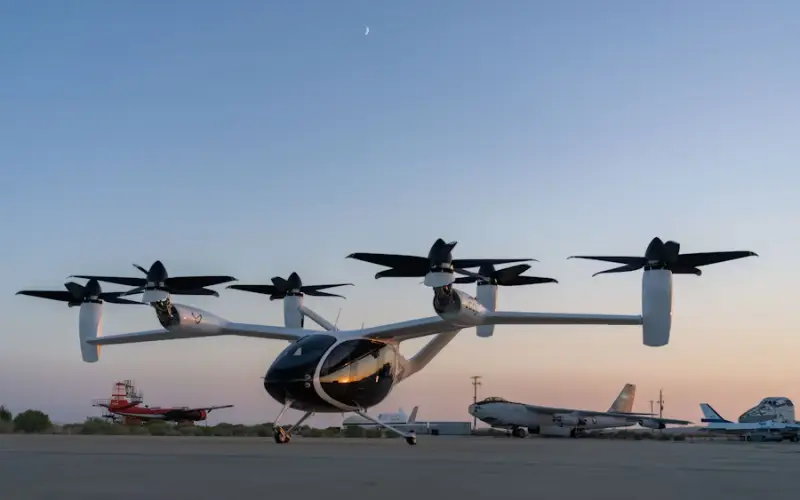
An experienced tiltrotor from Joby Aircraft, transferred to the Pentagon last year. Photo Joby Aircraft
The Pentagon and related structures are again looking for opportunities to increase the mobility of personnel in the context of daily service and combat missions. Several years ago they returned to the concept of an “air jeep” and even launched a competitive development of such equipment. Work of this kind has been compiled into a program called Agility Prime, which has already produced some results, but overall does not yet live up to expectations.
Transport problem
The US armed forces have many bases, both within the country and abroad. There is regularly a need to transfer a limited number of people and cargo from one such facility to another. In addition, some bases are large in size, and moving around them becomes a separate specific problem.
Depending on the distances, problems of this kind are solved using road or air transport. Military personnel travel within the same base in cars; the same transport is suitable for traveling between different objects. Helicopters or airplanes are used to cover long distances and/or reduce travel time.
In general, such a transport support system corresponds to the assigned tasks, but is not without shortcomings. Thus, motor transport, despite its simplicity and low cost of operation, has a limited speed, while aviation convenient, but quite expensive. At the same time, all existing types of transport have an innate list of advantages and disadvantages, which is almost impossible to change.
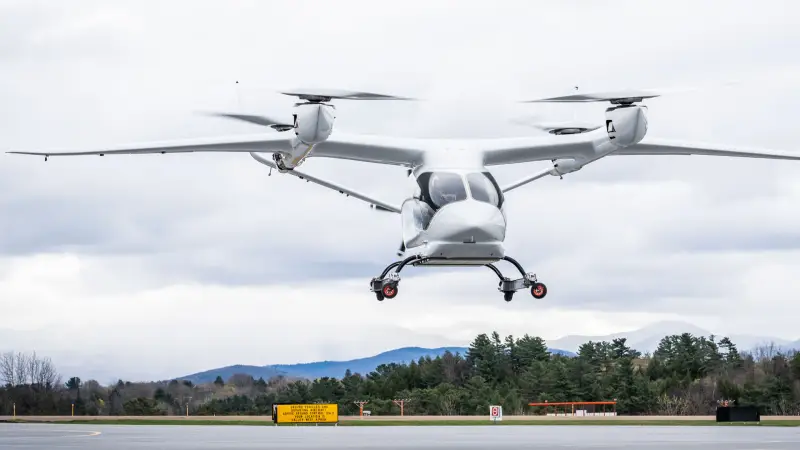
ALIA aircraft during testing. Photo BETA Technologies
To optimize the transport system, the concept of a “flying jeep” was proposed several decades ago. It involves the creation of a light aircraft capable of transporting several people or comparable cargo over a limited distance. At the same time, the device should be simple in terms of design and inexpensive to operate.
The Pentagon has addressed this topic several times in the past. Private companies offered their projects of this kind. Due to objective reasons, those projects did not cope with the assigned tasks and did not advance beyond the development and testing stage. However, the military department does not abandon the promising idea. Several years ago they returned to it again, and now they plan to implement it using modern technologies.
"Primary mobility"
In April 2020, the Pentagon launched a promising research program called Agility Prime (can be translated as “Primary Mobility”). During this program, it was planned to hold a competition to develop a new “flying jeep” built using modern technologies. The most successful project could be developed in the future and even reach mass production.
There were several basic requirements for a promising aircraft. At the same time, due to the lack of developed technologies and concepts, the terms of reference were quite gentle and did not set strict limits. However, all events were planned to be carried out in a minimum amount of time. Thus, experimental equipment or technology demonstrators were expected during 2020-21, and the start of serial deliveries of “flying jeeps” was scheduled for 2023.
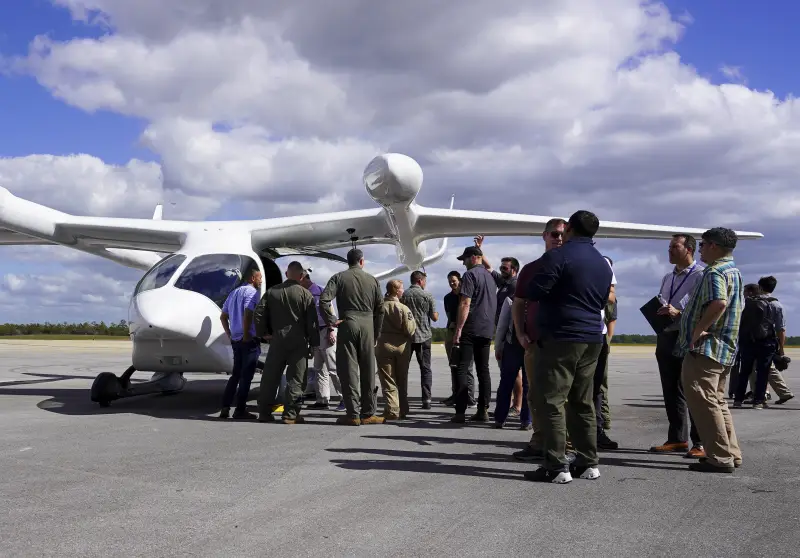
Transfer of the BETA ALIA product to the customer, October 2023. Photo of the US Department of Defense
The key technical requirement was the use of vertical takeoff and landing. The customer also wants to use an electric powertrain. Understanding all the limitations and complexities of such systems, the Pentagon referred to the possibility of obtaining high performance and simplifying the maintenance of equipment, which is of particular importance for the army. The specific tactical and technical characteristics required by the “jeep” were not specified.
Several American companies were interested in the Agility Prime program, mostly newly founded small organizations. Three of them passed the preliminary selection. In the near future, they had to work out their projects and build experimental equipment. Then the Pentagon planned to conduct comparative tests of three “jeeps”.
Despite all the optimism, the Primary Mobility program almost immediately ran into difficulties of various kinds. First of all, this resulted in failure to meet deadlines. Initially, it was assumed that the entire process from ordering to delivery of equipment to the troops would take a little over three years. In practice, everything turned out differently - by the end of 2023, they only managed to build and transfer the first prototypes.
Three contestants
Joby Aircraft was the first to cope with the task of developing and building an aircraft for the Pentagon. In September last year, it handed over to the customer a prototype of a “flying jeep”, which does not yet have its own name. The product was delivered to Edwards Air Force Base (California), where it must undergo all necessary tests, both independently and together with other equipment.
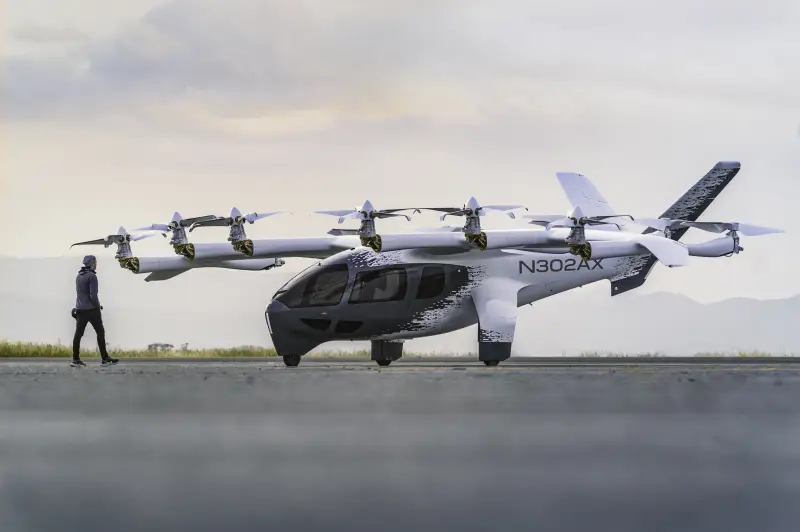
Archer Midnight tiltrotor. Photo Archer Aviation
The device from Joby Aircraft is actually a tiltrotor with an electric power plant. It has a teardrop-shaped fuselage with a five-seat cabin, as well as a narrow, high aspect ratio wing. There are four engine nacelles on the wing. The two central ones are made stationary, but their bow part with the propeller can be rotated upward. The side gondolas are all-moving. By changing the position of the nacelles and/or propellers, the tiltrotor must switch from one flight mode to another.
The type and characteristics of the engines and battery have not yet been announced. According to the calculations of the creators, the aircraft should reach a speed of approx. 200 miles per hour (more than 320 km/h) and have a flight range of up to 150-160 km. This level of performance is fully consistent with the intended tasks and operating conditions.
At the end of October, BETA Technologies handed over to the Pentagon a prototype of its ALIA tiltrotor. In addition, simulators for training crews and technical personnel have been submitted for testing. The aircraft has already passed some tests and shown some of its capabilities.
The ALIA product is a device vaguely similar to an airplane. It has a streamlined fuselage and high wings with a span of 50 feet (15 m). The wing of the vehicle has two longitudinal gondolas with a pair of lifting screws on each. The tail has a pusher propeller for horizontal flight.
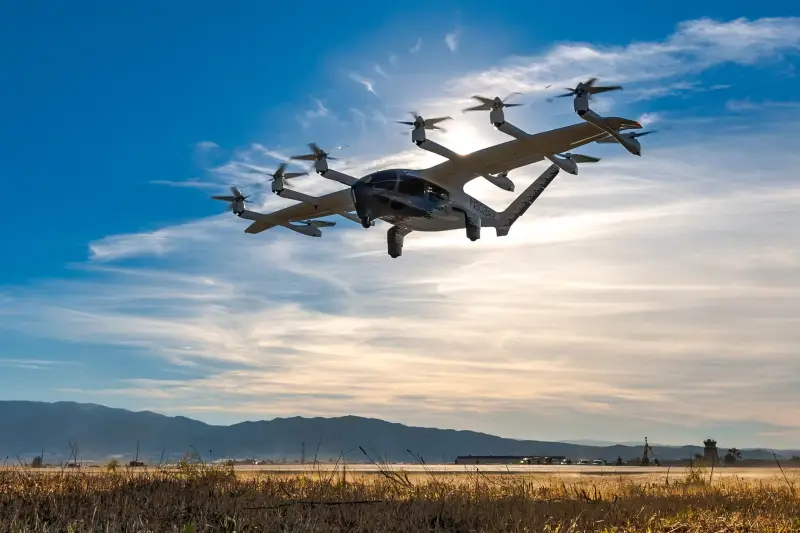
Midnight in flight. Photo Archer Aviation
The BETA ALIA “flying jeep” seats five people and can lift loads of up to 450 kg. The estimated maximum speed reaches 400 km/h. Flight range is at least 220 km.
The third participant in comparative tests will soon be the Midnight tiltrotor from Archer Aviation. It has already been built and is undergoing factory testing. In the near future, the product will be transferred to the Pentagon for necessary measures.
The Archer Midnight tiltrotor is similar in its architecture and design to a product from Joby Aircraft. At the same time, it is larger and heavier, and also has a different propulsion system. The straight wing houses six engine nacelles, each of which carries two propellers. The nose rotor can be in a vertical or horizontal position for lifting and takeoff/landing, respectively. The rear propeller is fixed in a horizontal position and is responsible only for vertical flight.
In terms of carrying capacity, Midnight is similar to ALIA - up to five people or 450 kg in the cabin. The maximum flight speed will be 240 km/h with a range of approx. 160 km. To solve the problems of the “jeep”, a special operating mode is provided. In this case, the device will have to fly at a distance of no more than 30-32 km with intermediate battery recharging between them, which will require no more than 12 minutes.
Uncertain Future
There are certain hopes for the Agility Prime program. If the results of this work succeed in obtaining all the desired results, then the American army will have a fundamentally new vehicle at its disposal with a special combination of technical and operational characteristics. With its help, it will be possible to improve the mobility of military personnel in different situations and optimize logistics in general.
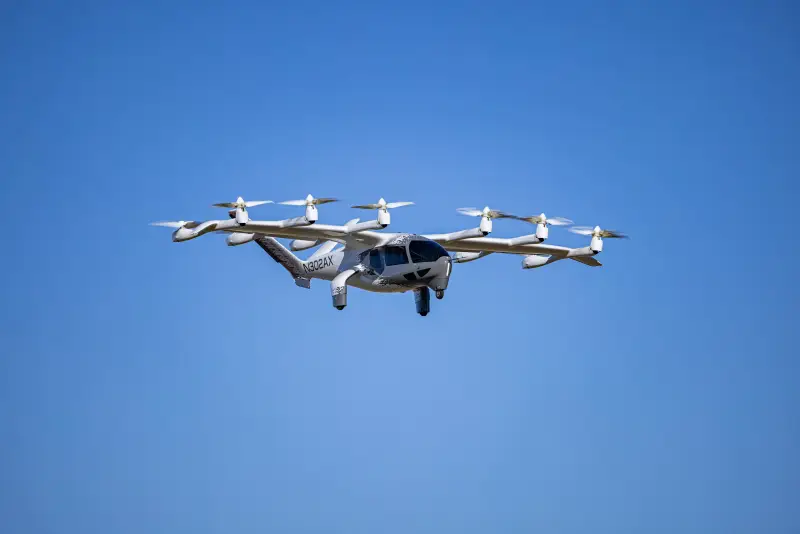
Midnight with propeller groups in hover/vertical flight mode. Photo Archer Aviation
However, successful completion of the current program is not guaranteed, as a number of factors clearly indicate. Thus, the Pentagon’s technical specifications turned out to be too complex, and the time to develop projects was insufficient. As a result, plans to begin deliveries of serial equipment in 2023 were not fulfilled. Moreover, by the end of last year, only two out of three prototypes had been built and submitted for testing.
Despite all efforts, the competition projects turned out to be quite complex. Apparently, this is due to the customer's requirement to use an electric power plant. Systems of this kind still have limited characteristics, and it is not easy to create a full-fledged aircraft with their help. At the same time, “Primary Mobility” is not required to have outstanding flight characteristics, which could reduce the complexity of the project to some extent.
Despite all the difficulties, the Agility Prime program is approaching the stage of comparative testing of three prototypes. This means that in the near future it will become clear whether the three aircraft manufacturing companies managed to cope with the assigned tasks and actually make a technological breakthrough. It is unknown whether the program will live up to its expectations. There are no clear reasons for positive forecasts yet, but pessimism may be premature.
Information